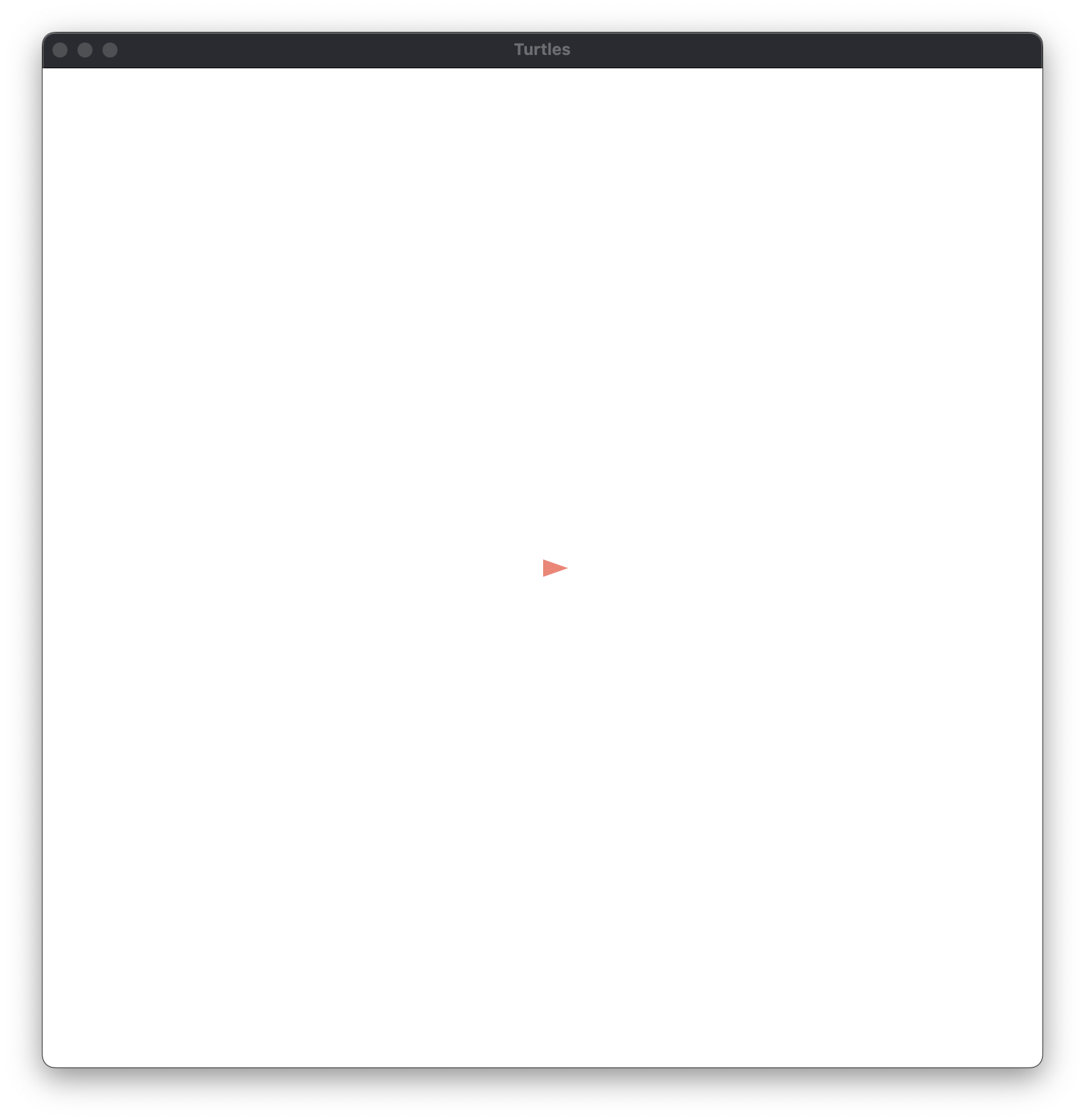Turtle Geometry: 0.1. An Introduction
Imagine that you have control of a little creature called a turtle that exists in a mathematical plane or, better yet, on a computer display screen. The turtle can respond to a few simple commands: FORWARD moves the turtle, in the direction it is facing, some number of units. RIGHT rotates it in place, clockwise, some number of degrees. BACK and LEFT cause the opposite movement.
I came across this book: Turtle Geometry: The Computer as a Medium for Exploring Mathematics by Harold Abelson and Andrea diSessa1, which describes itself as “a computer-based introduction to geometry and advanced mathematics at the high school or undergraduate level”, and thought it would be fun to work through it generating the images, and doing the exercises.
0.1. An Introduction
The Turtle Geometry book opens by saying:
This is a book about exploring mathematics, and the most important thing about exploring mathematics is for you to do it rather than just passively read what we’ve written. Many of the sections…contain extended descriptions of computer projects for you to implement and investigate. Additional open-ended projects, indicated with [P], are listed with the exercises at the end of each section.
In the spirit of the book, I’ll tackle the additional projects to a degree that seems practical to explore the concepts presented.
Technical Considerations
Following the preamble, the book addresses a few preliminary technical considerations we’re to attend to before starting.
The first consideration is our computing environment:
The computer used to undertake these projects must be capable of producing drawings in response to “turtle graphics” commands.
The second is the notation:
In writing a book about computer graphics projects we had to select a notation in which to describe the algorithms. Our response was to choose a notation in which turtle algorithms can be expressed simply, and yet which is close enough to real programming languages so that you should have little troubling translating our programs into the language of your choice.
There are appendices to help us in this respect.
For the computing environment we’re to refer to Appendix B: Turtle Programs in Conventional Languages:
This appendix is an aid to adapting the programs in this book for work with computer systems and languages that are widely available.
It then describes some General Considerations, of which, for a modern computing environment, we only need to concern ourselves with the Display:
In addition to a computer equipped with a suitable language, work with turtle geometry requires a graphic-output device capable of producing line drawings.
No problem.
Choosing a Programming Language
Next, we’re directed to Programming Language considerations:
…essentially any programming language can do the same things as any other.…a computer language similar to the Turtle Procedure Notation used in this book can simplify the programming and allow you to concentrate on the mathematics, on inventing and exploring.
I’ll be using a variety of operating systems and platforms while while working through the exercises in this book, including MacOS (arm64), Ubuntu (x86_64 GNU/Linux), and Raspbian (aarch64 GNU/Linux), so I want something which runs on all of them.
Except for minor variations of syntax, Logo is substantially the same as the Turtle Procedure Notation used in this book.
Lisp is another language that is structurally very compatible with our criteria. In fact, Logo is a direct descendant of Lisp.
I’ve decided to use Racket, a dialect of Lisp, as my implementation language. It has a GUI, a repl, and a built-in Turtle Graphics package.
#lang racket
;; Prelude B.0
(require graphics/turtles)
; Initialize.
(turtles #t)

Reflections
So far so good, we’ve chosen a language, and we’ve got a turtle on the screen. That was pretty easy. I’ve looked ahead in the book, and (spoiler alert) the Turtle Graphics module we’ve chosen is missing some functionality we need. But for now this will do, we’ll cross that bridge when we come to it.
Next Steps
With the choice of language out of the way, it’s time to turn to the Turtle Procedure Notation mentioned earlier.
I’ll tackle that in the next post.
-
- Turtle Geometry: The Computer as a Medium for Exploring Mathematics
- Harold Abelson and Andrea diSessa
- First MIT Press paperback edition, 1986
- ©1980 The Massachusetts Institute of Technology
- ISBN 978-0-262-51037-0 (paperback)